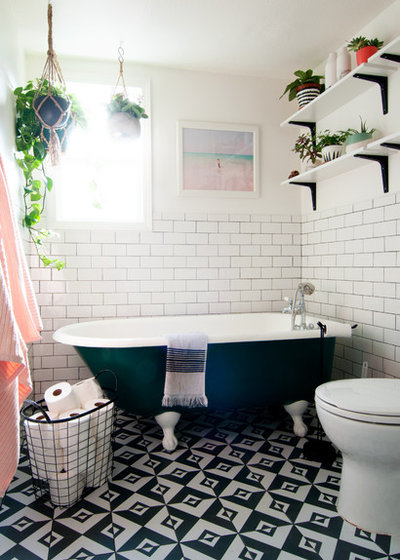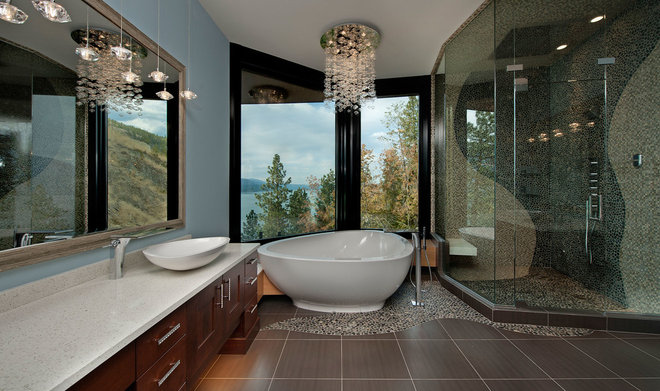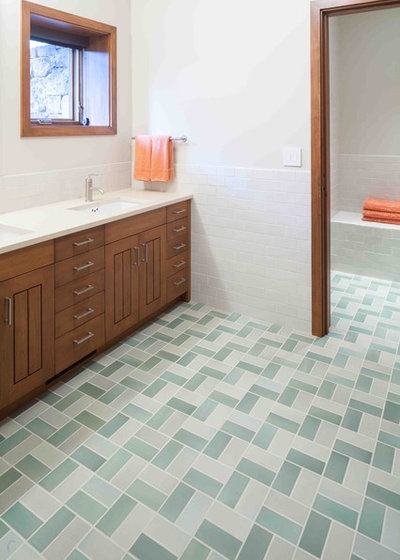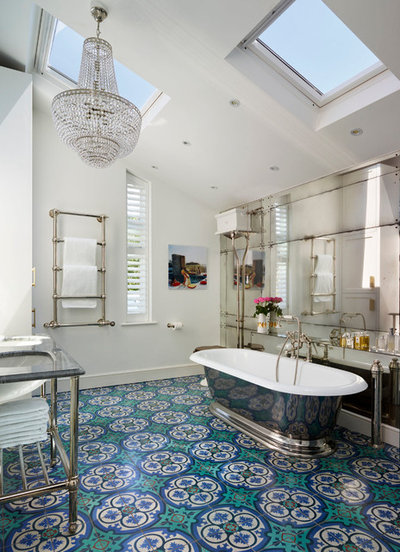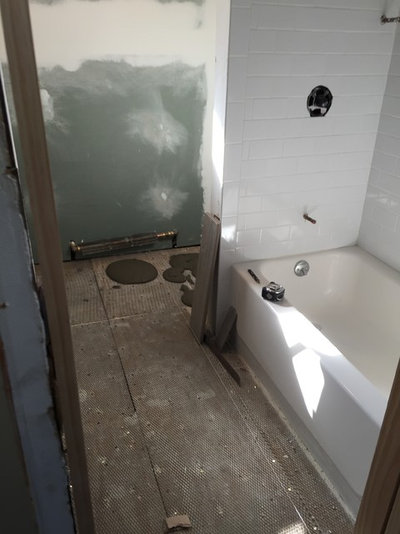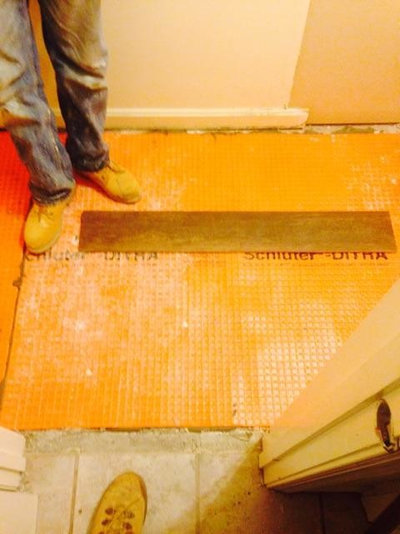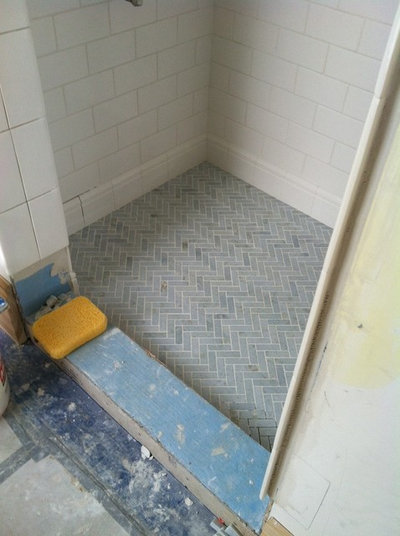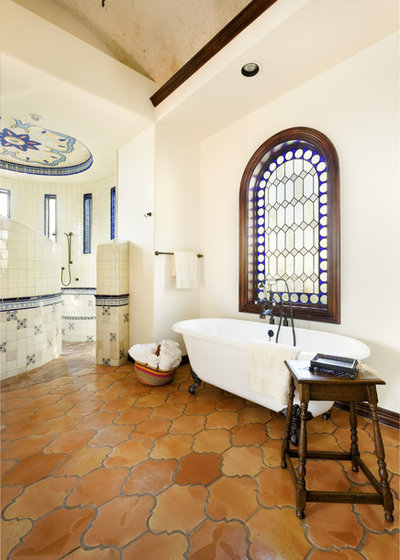Great Home Project: Install a New Tile Floor
Project basics: Installing tile involves stripping the floor down to the substrate, installing a backer board or underlayment, adhering the tile to the floor and grouting it. Depending on the material, sometimes a sealer is needed to protect the material from stains or damage.
Things to consider: Before you decide whether to DIY or hire a contractor, think about the pattern you want to install. Is it basic and fairly straight? Then you might be just fine trying your hand at a little tile-laying. Going for something more complex, with angles or curves involved? You might want to leave the headache to a professional. The idea here is to match your skill level, DIY confidence and tolerance for imperfections to the task. Some creative people, such as this Houzz reader who created a Gaudi-inspired mosaic in her bathroom, find no tile challenge is too great. Others who are certain they’ll be annoyed by off-kilter or irregular grout lines may want to enlist the help of a pro.
“The bigger the tile, the more challenging,” says Joe Smith, general contractor at Owings Brothers Contracting in Eldersburg, Maryland. A larger tile is more likely to show imperfections since a 2-foot tile may bow over an unlevel subfloor, while a 1-inch tile would climb right over the floor’s curves.
“Natural tiles cost more to install because you have to clean and seal them before you set them,” Smith says. “Glass and marble cost more because you have to prep [them] correctly.”
As you consider various tile options, also think about how well the type of material wears and how hard your family is going to be on it. Porcelain tiles wear “like steel,” Chumbley says, but limestone is more delicate.
Basic steps: Decide what type of tile you want to install. You can get ideas in tile showrooms, magazines and photos and tile product shots on Houzz.
Next, consider the steps that will be involved, from demolition of the existing floors to any work that may need to be done to prep them for new tile installation. Leveling the floors and assessing any substrate issues is likely to be the most technical part of this project. Harper recommends consulting a general contractor who will “look at the structure of the subfloor and at all the angles to make sure what’s getting done is appropriate and will last for a long time.”
Once the subfloor is ready, the next basic step is installing cement backer board or an uncoupling membrane. Both materials serve as the underlayer to the tile floor and help prevent cracks.
Find tile pros near you
Next, mark out the tile layout. “Don’t start with the tile against one wall and go across the room,” Chumbley says. It’s better to start from the center of the room and work your way out. The layout of the tile is typically marked in chalk. The width and color of the grout are part of the aesthetics. The tile layer can use spacers to keep the tiles evenly apart as the pattern progresses.
Once the tile is set, it’s time to apply the grout. You should take care to choose a grout that works with your particular material. “Glass can get scratched with grout,” Smith says. “There’s different grout for floors and shower walls.”
Typical project length: Three days, especially if demolition is involved. Cement board and mortar usually need a day each to set.
Permit: Often not required, but check with your local building department.
Best time to do this project: Since it’s indoors, any time of year is fine.
How to get started: Assess what your room needs and whether you will DIY. If not, find a good tile person.
Are you working on your house this year? In the Comments, please tell us what’s first on your list.
